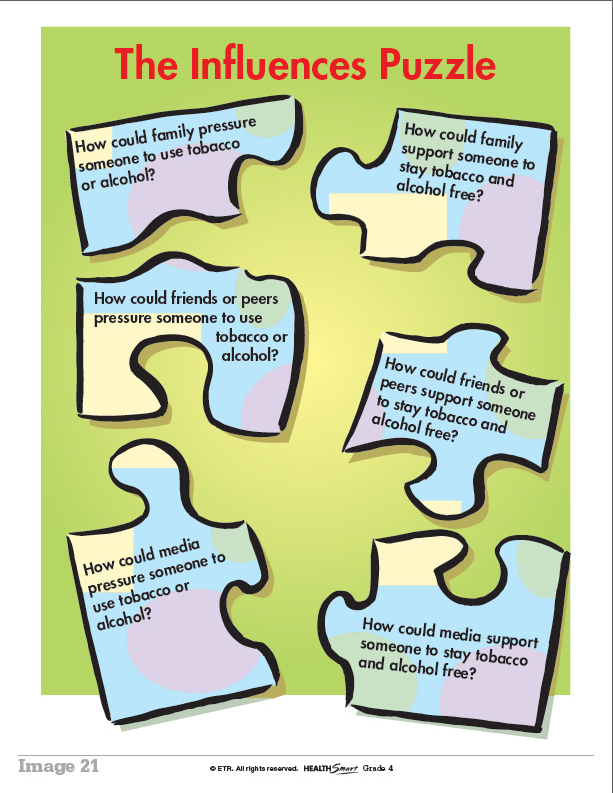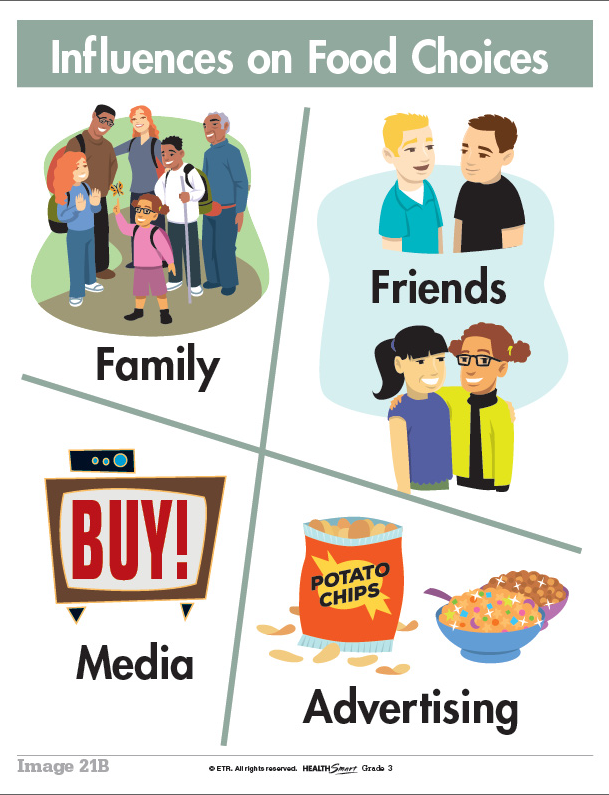Building Health Skills: Analyzing Influences
By Suzanne Schrag | February 7, 2019
What makes young people do the things they do? And how does this affect their choices about health and risk?
Young people’s health behaviors can be influenced by a number of different factors, including family, friends, entertainment and social media, fads and trends, and their own internal attitudes and beliefs. One particularly powerful area of influence is the family, peer and social norms they see reflected in the actions and values of those around them. The things they see—and, sometimes even more important, the things they think they see (the perceived norms)—can either support or discourage healthy behaviors.
We are offering a series of blog posts about the ways HealthSmart addresses the seven key skills for health literacy addressed in the National Health Education Standards. Other posts in this series:
Shaping Healthy Peer Norms
One of the key Characteristics of an Effective Health Education Curriculum is that a program “addresses individual and group norms that support health-enhancing behaviors.” HealthSmart is designed to build a personal value for health as students explore health beliefs and the potential outcomes of health choices. It shapes healthy peer norms as students understand the healthy actions their family and friends support and expect.
Lessons cover current youth norms around a variety of health behaviors, such as injury, sexual activity and substance use, both to reinforce positive norms and to help students understand how misperceptions of those norms—e.g., a false belief that “everyone is doing it”—can negatively affect their health-related choices and behaviors.
"Analyzing Influences" is the skill addressed by the second of the National Health Education Standards. This key skill for health literacy is particularly critical today, when children and adolescents not only witness and absorb the beliefs, behaviors and norms reflected within their families, groups of friends, schools and local communities, but also are exposed to the much wider, and not always health affirming, world of the Internet and social media.
The 7 Health Skills
In addition to outlining performance indicators for comprehending concepts, the National Health Education Standards (NHES) also set performance criteria for these seven critical health skills:
- Analyzing Influences
- Accessing Resources
- Interpersonal Communication
- Decision Making
- Goal Setting
- Practicing Health-Enhancing Behaviors
- Advocacy
What Influences Youth and When?
As with the other skills covered by the Standards, the performance indicators outlined at each grade span reflect how what it means to practice a particular skill evolves as students grow in knowledge, capacity and independence. The changing indicators for Standard 2 follow how students are increasingly influenced by myriad factors as they move from the elementary grades to middle school and high
In Grades pre-K though 2, three main influences are addressed by the Standard—family, school and media. At Grades 3 through 5, the scope widens to include culture, peers and technology. By Middle School and High School, students are also expected to understand how perceptions of norms, personal values and beliefs, other health risk behaviors, and school and public policy can influence choices around health.
Some HealthSmart Examples
ETR’s HealthSmart program includes the skill of analyzing influences at all grade levels K–12, closely following the guidance of the NHES.
In the primary grades (K–2), students identify the ways their families help them stay healthy. They look at the benefits of healthy family relationships and consider specifically how family members can help them be safe and stay tobacco free.

Middle School lessons continue to teach the skill of analyzing influences, applied to such topics as expression of romantic feelings, abstinence, school rules, food and physical activity choices, body image, cyberbullying, risk taking that can lead to injury, and tobacco, alcohol and other drug use. At this grade level, students also begin to study the difference between perceived and actual norms around sexual behaviors, substance use and violence, and learn how use of alcohol or other drugs can influence judgement and lead to further risky behaviors.
The High School program helps students continue to hone their ability to analyze influences on many of these same topics, with an increasing emphasis on influences of relationships, risk and protective factors, and understanding how their own personal values, beliefs and attitudes can shape their health choices
At each of these grade levels, students are able to practice skills that make sense developmentally and help them meet the objectives from the NHES.
Check It Out
If you’re intrigued and would like to learn more about ETR’s comprehensive, skills-based, standards-aligned K–12 health education program, visit the HealthSmart website. You can also email or call ETR at 1-888-220-9455 to set up review access to the digital edition of the program.
Suzanne Schrag is the series editor of the second edition of the HealthSmart program, and a co-author of the newly revised K–5 grade levels.





